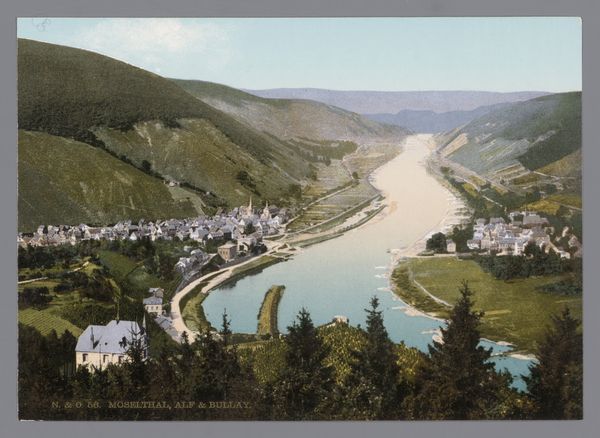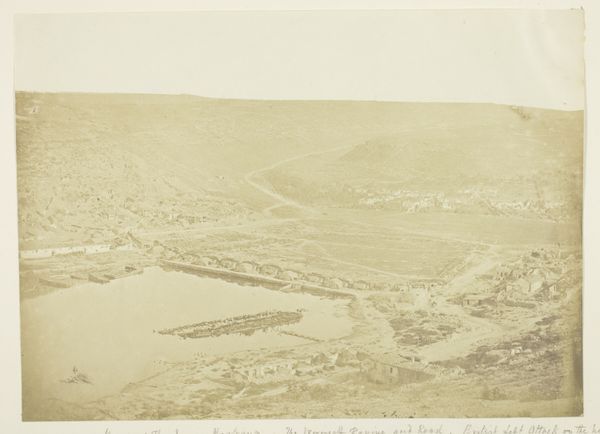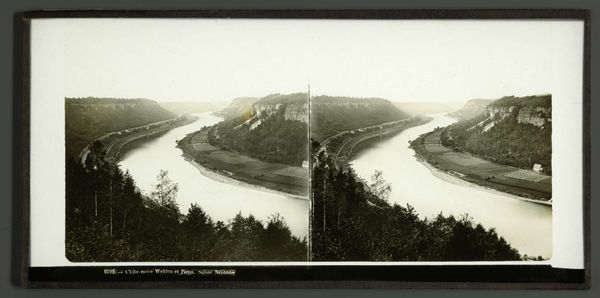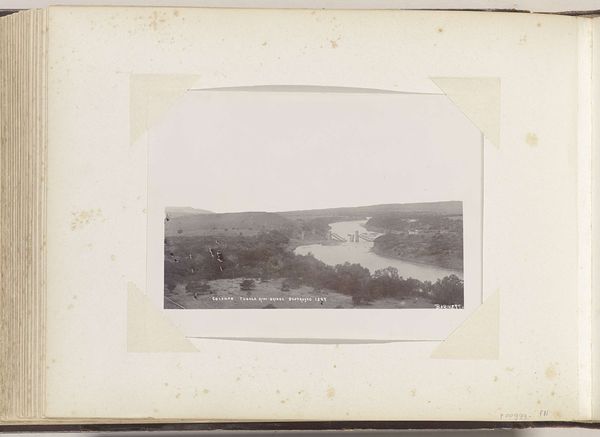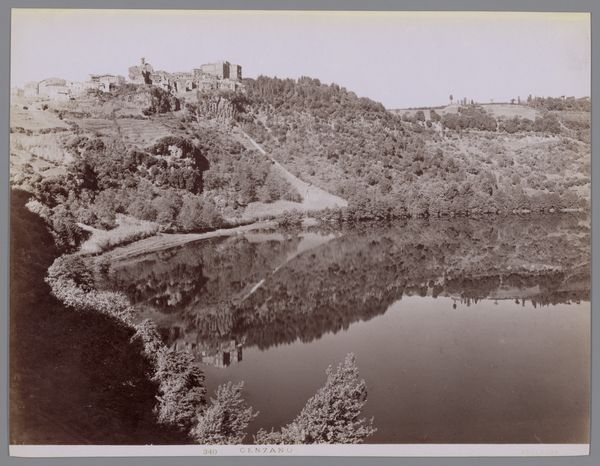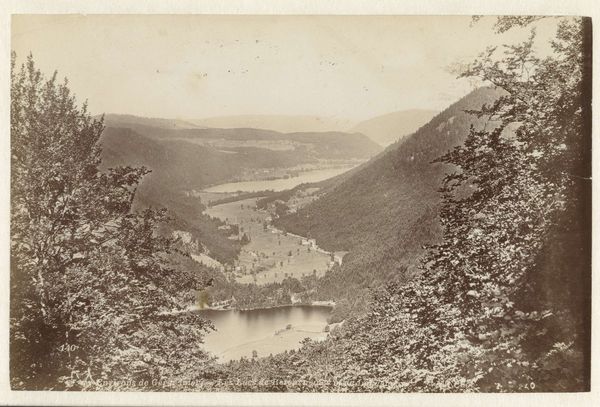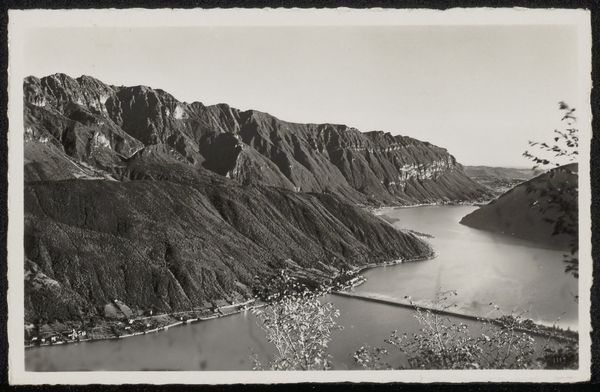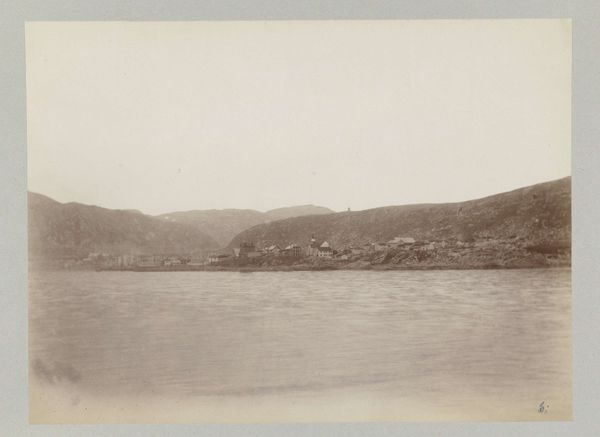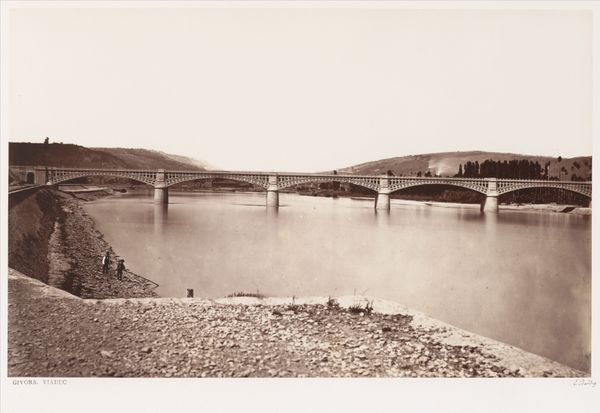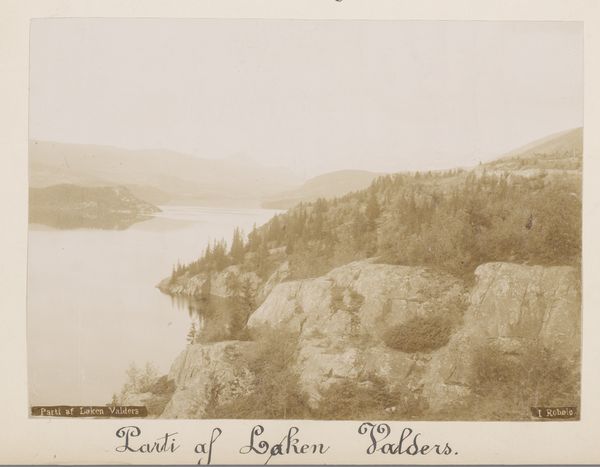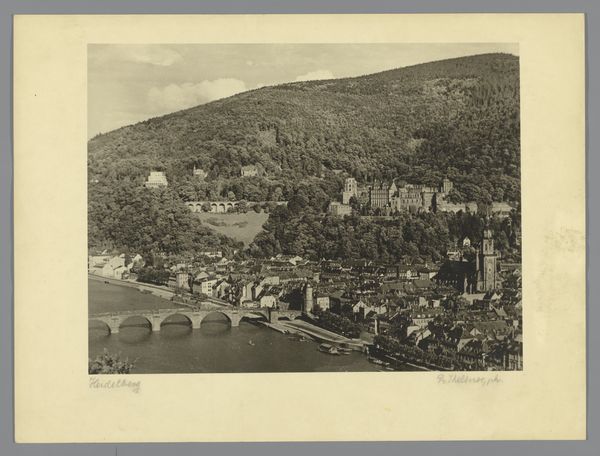
photography
#
pictorialism
#
landscape
#
photography
#
post-impressionism
Dimensions: height 120 mm, width 170 mm
Copyright: Rijks Museum: Open Domain
Curator: Here we have a landscape photograph titled "Gezicht op de Marienburg bij Pünderich aan de Moezel." The piece, part of our photography collection at the Rijksmuseum, is believed to have been created sometime between 1890 and 1920. Editor: Wow. It's like looking at a fairytale scene, so lush and romantic. There’s this imposing fortress overlooking everything – very Brothers Grimm. But it also has an unreal, dreamlike quality. Is it Pictorialist? Curator: Indeed. Note how the photographer employs soft focus and tonal manipulation, elements consistent with the Pictorialist aesthetic that sought to elevate photography to the level of painting. And yes, we can situate it in the tail end of Post-Impressionism. Editor: So, it's intentionally blurring the lines between photography and painting. The landscape almost feels staged. It's wild, yet carefully organized to give this almost painterly aesthetic effect with the lighting, and that hazy, vintage effect. What's most striking is how this makes the Marienburg feel almost distant despite its central place. Curator: Precisely. The composition invites a formal reading too. Observe the serpentine river, a compositional device common in landscape art that draws the viewer's eye deep into the frame and creates depth. Also note the strategic placement of the fortress and other small dwellings acting as points that offer an anchoring effect as your eye follows the horizon line, with the interplay of light and shadow creating tonal balance throughout the image. Editor: I think its success is in creating that strange juxtaposition of a very real, tangible place filtered through this wonderfully idealized lens. It becomes more of an emotional landscape. A place both here and… not quite here, if that makes sense. Curator: It makes perfect sense. Ultimately, what the artist achieves through these structural devices and pictorial techniques is not merely a depiction of the Moselle River, but rather an evocation of a feeling – a nostalgic vision. Editor: A real treasure, really. It stays with you. Curator: Indeed. This image exemplifies how photographic techniques were intentionally used at the time to represent artistic vision rather than reality.
Comments
No comments
Be the first to comment and join the conversation on the ultimate creative platform.
